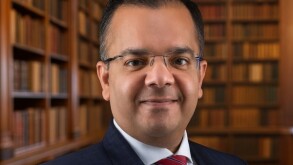The week concluded with the court hearing about the holding structure for the transaction.
Day eight of the hearing started with Vodafone’s counsel, Harish Salve, facing questions from Chief Justice Kapadia as to what would be the position if a US company sets up a Mauritian subsidiary which then invests in an Indian company.
Kapadia enquired if the shares of the Indian company are then transferred by the Mauritius company, would the capital gains be taxable in the hands of the American company as it is the real owner.
Salve was also asked if in that situation the tax officer could look into the real owner of the shares, though the transaction was not a tax fraud.
Vodafone’s counsel responded by stating that the exercise would not amount to lifting of the corporate veil but would look into the legal form and ownership of shares.
Salve then explained the difference between lifting the veil and finding the real nature of the transaction.
He also claimed that corporate structures need to be respected. He again argued that this case should be regarded as that of a share sale only and nothing else.
Timing and stage are more important
Day nine of the hearing continued the debate on whether the corporate veil should be lifted.
He claimed that in a transaction the timing and stage of the deal were more important than the motive to save tax.
Salve continued by submitting that structuring as a part of the transaction, as against a pre-existing structure which has no nexus with the transaction, should be viewed differently.
For the first time in the hearing, Kapadia asked why Vodafone did not acquire the Indian shares directly but acquired shares in the Cayman Islands company.
Salve responded by arguing that the saving of taxes using lawful structures is permissible and claimed that anything which saves taxed cannot be called artificial.
He then said that even a direct sale of the Indian shares would not have been taxable under the India-Mauritius tax treaty.
Salve added that sale of a holding company in a vertical structure, can result in the sale of a whole structure.
Holding structure
The second and last day of week four ended with Salve explaining the Hutch holding structure in detail and the break-up of the 67% holding acquired by Vodafone.
Salve said that around 42% was acquired directly through various subsidiaries or sub-subsidiaries and 9% through indirect holdings. The total equity of around 51% was acquired by Vodafone.
Vodafone also had options to purchase additional shares which would have resulted into a total holding of 67%, which was for the purposes of stock exchange and accounting disclosure only.
The break-up was submitted to refute the tax department’s arguments that Vodafone merely acquired 42% through shares and the remaining shares were acquired through various other agreements located in India, resulting in transfer of control, which was an asset situated in India.
The hearing will reconvene on August 30. It is expected that Salve will continue his arguments for a further three to four days.
The summary of proceedings in this article is based on the editorial feed provided by Taxsutra.com which is covering the hearing in technical detail on a daily basis.
Vodafone SC hearing: Week three









